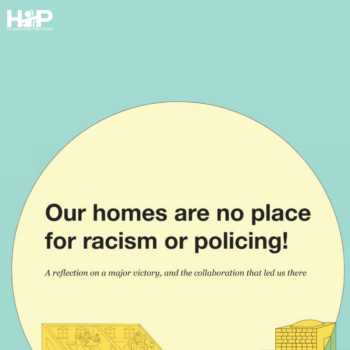| By Dawn Haney |
A group of high school students and teachers in Compton, California are taking their school district to court, claiming their schools are legally required to accommodate the ways that chronic poverty, abuse, and neglect affect their learning.
Surprisingly, they are using special education law in the American with Disabilities Act and the 1973 Rehabilitation Act, which specifically requires schools to serve students with physical and mental impairments.
Does trauma affect learning? In short, yes.
HIP reviewed the literature as part of our 2014 study of California’s change to finance education via the Local Control Funding Formula. We found that Adverse Childhood Experiences – such as abuse, neglect, exposure to violence, or living in a household with mental illness or an incarcerated family member – are an obstacle to learning and achievement in school. These experiences affect students’ concentration, absenteeism, aggression, and mental health. Children with multiple Adverse Childhood Experiences (often called ACEs) are more likely than their peers to abuse drugs and alcohol and to drop out of school before graduation.
For schools that want to support their students’ success, our top recommendation was to expand programs that address the trauma and stress of Adverse Childhood Experiences, such as School-Based Mental Health Programs and Services. You can read more detail in our full report, “When Health is the Root Cause of Poor Education Outcomes.”
The five high school students and three teachers who have brought forth the lawsuit are going beyond making recommendations. They are insisting that schools that don’t accommodate trauma are engaging in unlawful discrimination. The students’ trauma is complex; hearing their stories makes me wonder how anyone could even show up to school, much less excel, under their life circumstances:
“Peter grew up with physical and sexual abuse, lived in foster homes, and has witnessed more than 20 people get shot. In March and April, he slept on the roof of the high school because he was homeless. When he was discovered, he was suspended.”
While trauma’s effect on student learning is clear, does disability law offer a promising legal avenue for students affected by complex trauma?
Some advocates for youth have expressed concern about the legal strategy. As Louise Godbold writes,
“We must be careful that trauma, this rage and numbness that is (as Bessel van der Kolk says in “The Body Keeps the Score”) ‘honestly come by’, does not become another label to stigmatize and to point blame at some perceived defect in the students, or worse still, a whole community.”
The legal system is an imperfect system for guaranteeing rights, in that it requires one to be characterized as different in order to receive support. Seeking legal remedy for rights that have been denied can appear to have an inherent tendency toward pathologizing or otherizing people. This very case, as made by the attorneys at Public Counsel, relies on stereotypes of Compton as a bad neighborhood. Were these students approached to participate in the lawsuit because they – and their entire community – are easy to pathologize?
Yet the history of the ADA and other civil rights legislation shows that the legislation doesn’t create stigma, so much as name stigma so that it can be remedied. When the discrimination is systemic – like with people with disabilities and students in Compton – civil rights legislation can shift the conversation from a focus on individual to a focus on the systems that disadvantage them. As my wheelchair-riding friend Patty Berne pointedly asks, “Is the problem with our bodies that need wheelchairs or with the buildings that only have stairs?”
The ADA has moved the focus toward building ramps and installing elevators, important changes to the built environment that help not only people with disabilities, but all of us. Who hasn’t been grateful to not be daunted by a flight of stairs when you are pushing your kid in a stroller or just carrying too many groceries home?
I get the sentiment in Godbold’s article that disability is often over-medicalized. Framing complex trauma as disability could lead toward fixing trauma only with a medical model (pills and maybe some meditation to cope better with stress) rather than a focus on changing the conditions that create trauma in the first place. But I also hear an undercurrent of concern that “disability” is a particularly worrisome label for kids with trauma, and I worry that the critique of this legal strategy stems from ableist attitudes rather than an assessment of whether this would serve students.
When discrimination is systemic – running more deeply than any one school district – who is responsible for remedying the problem? This particular lawsuit pins the blame on Compton Unified School District, an already under-resourced school district. Should the focus instead be increased state funding – already boosted via LCFF for foster children, low-income kids, and English learners – so schools can better support students with significant trauma? Or should efforts be directed toward undoing legislation like Proposition 13, which has been a stranglehold on education funding?
We’ll be watching this case — and its intended and unintended impacts on education justice — closely.




